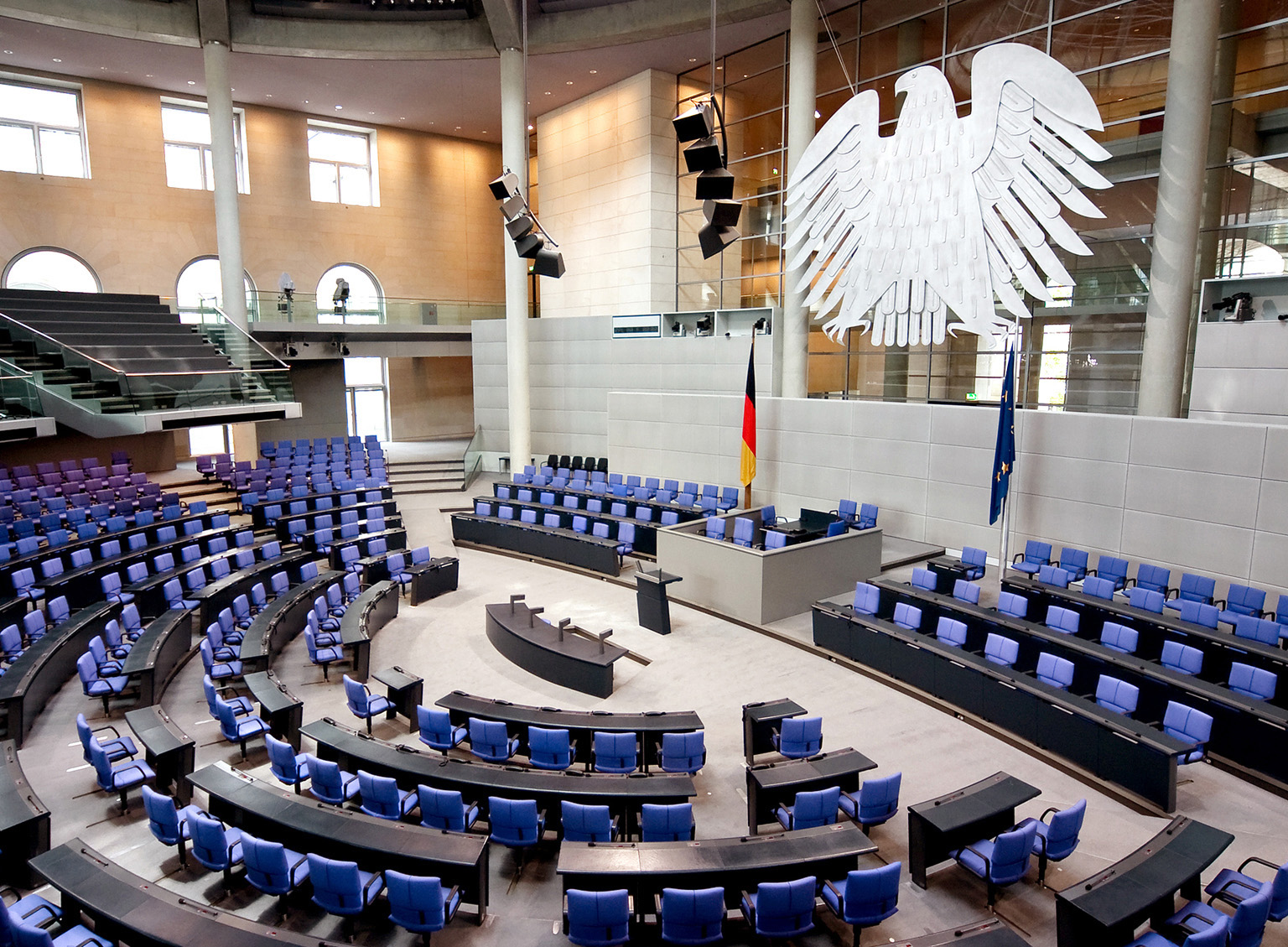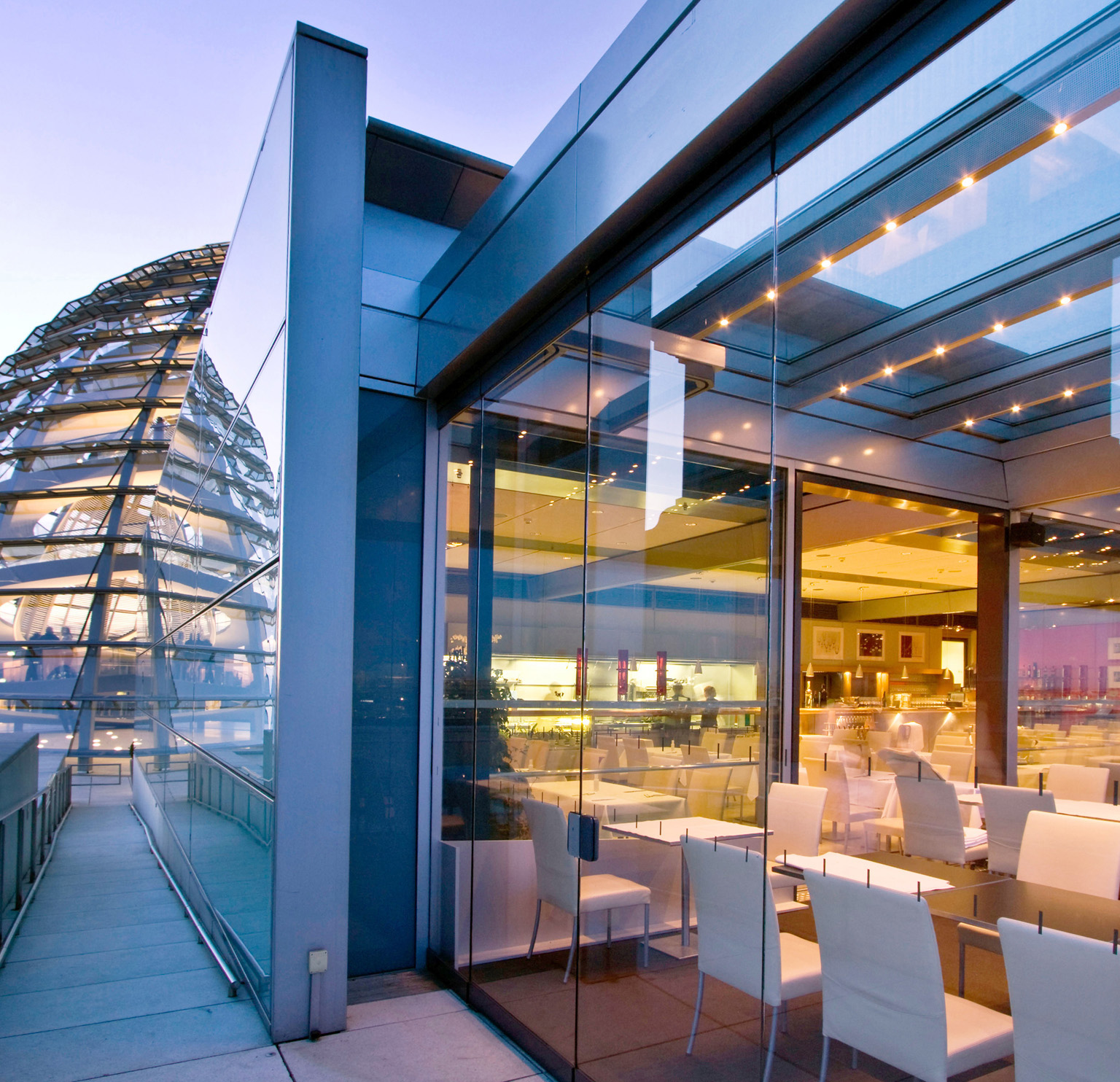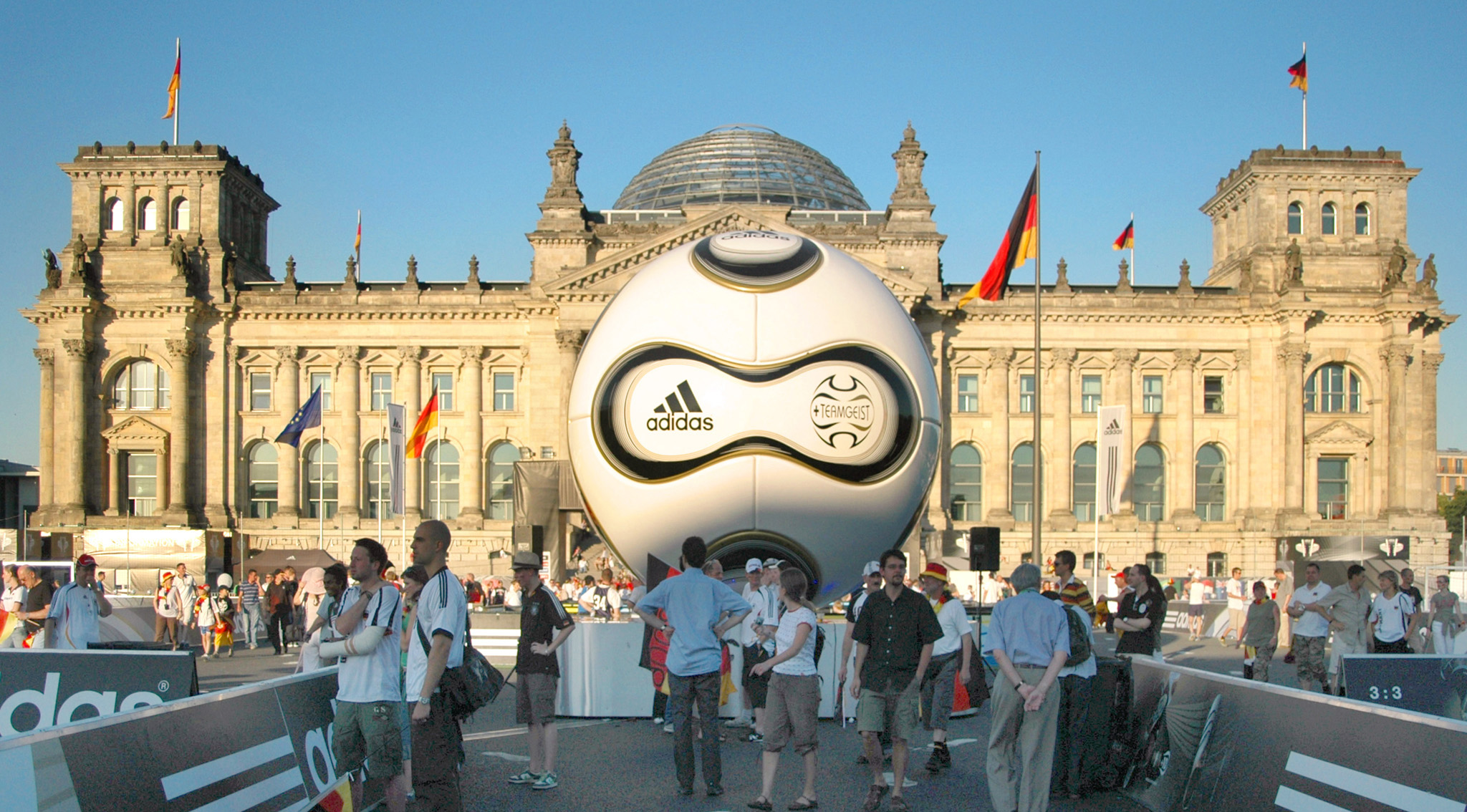
REICHSTAG
Of all the buildings in Berlin, the Reichstag, seat of the Bundestag (parliament), is probably one of the most symbolic. The mighty structure, erected in 1884–94 by Paul Wallot as the proud manifestation of the power of the German Reich, was destroyed by arson in 1933 and bombed during World War II. In 1995, the artist Christo wrapped up the Reichstag and, in 1999, the British architect Lord Norman Foster transformed it into one of the most modern parliamentary buildings in the world.
NEED TO KNOW
![]() Platz der Republik 1 • Dome: (030) 22 73 21 52; Käfer: (030) 22 62 99 33 • www.bundestag.de • Open Dome: 8am–midnight (last entry 10pm); Käfer: 9am–4:30pm & 6:30pm–midnight daily
Platz der Republik 1 • Dome: (030) 22 73 21 52; Käfer: (030) 22 62 99 33 • www.bundestag.de • Open Dome: 8am–midnight (last entry 10pm); Käfer: 9am–4:30pm & 6:30pm–midnight daily
![]() To visit the Reichstag dome you must register at www.bundestag.de 2–3 days in advance. You can try for same-day admission at the Visitors’ Service Center (open Nov–Mar: 8am–6pm daily; Apr–Oct: 8am–8pm daily) next to the Berlin Pavilion on Scheidemannstraße. You will need your passport/identity card.
To visit the Reichstag dome you must register at www.bundestag.de 2–3 days in advance. You can try for same-day admission at the Visitors’ Service Center (open Nov–Mar: 8am–6pm daily; Apr–Oct: 8am–8pm daily) next to the Berlin Pavilion on Scheidemannstraße. You will need your passport/identity card.
- If a meal at Käfer exceeds your budget, many stalls near the Reichstag sell tempting Bratwurst (sausages).
1. The Dome
The Reichstag dome by Lord Norman Foster affords breathtaking views of Berlin. It is open at the top to air the building and—a symbolic touch—to allow for the free and open dissemination of debates throughout the country. A ramp winds its way up to the top.

The Dome
2. Plenary Hall
The plenary hall is the seat of the Deutscher Bundestag—the German parliament—which has convened here again since April 20, 1999. Technologically, the hall is one of the most advanced parliament buildings in the world. The federal eagle caused argument: considered too “fat,” it had to be slimmed down.

Plenary Hall
3. Portico “Dem deutschen Volke”
The dedication “To the German People” was designed in 1916, against the will of Wilhelm II.
4. Restored Façade
Despite extensive renovations, small World War II bullet holes are still visible in the building’s façade.
5. Restaurant Käfer
This popular luxury restaurant on the Reichstag’s roof offers an excellent view of the historical center of Unter den Linden.

Restaurant Käfer
6. Platz der Republik
Celebrations often take place on the lawn in front of the Reichstag, as in 2006, when Germany hosted the FIFA World Cup.

Platz der Republik
7. Installation “Der Bevölkerung”
Hans Haacke’s work of art “To the People” is a counterpoint to the portico inscription opposite and uses the same style of lettering.
8. The German Flag
The giant German flag was first raised on the occasion of the official national celebrations of German reunification on October 3, 1990.

The German Flag
9. Weiße Kreuze Memorial
Opposite the southern side of the Reichstag, a memorial recalls the Berlin Wall, which stood only a few steps away. The white crosses commemorate the people who died there while trying to escape to West Berlin.
10. Memorial by Dieter Appelt
Unveiled in 1992, the memorial in front of the Reichstag commemorates 97 Social Democratic and Communist delegates who were murdered under the Third Reich.

Memorial by Dieter Appelt
THE REICHSTAG FIRE
When the Reichstag went up in flames on February 27, 1933, the Dutch communist van der Lubbe was arrested for arson. It is, however, likely that the Nazis started the fire themselves. Hitler used it as an excuse to get the “Enabling Act” passed, which let him dispose of his opponents and marked the start of a 12-year reign of terror.
